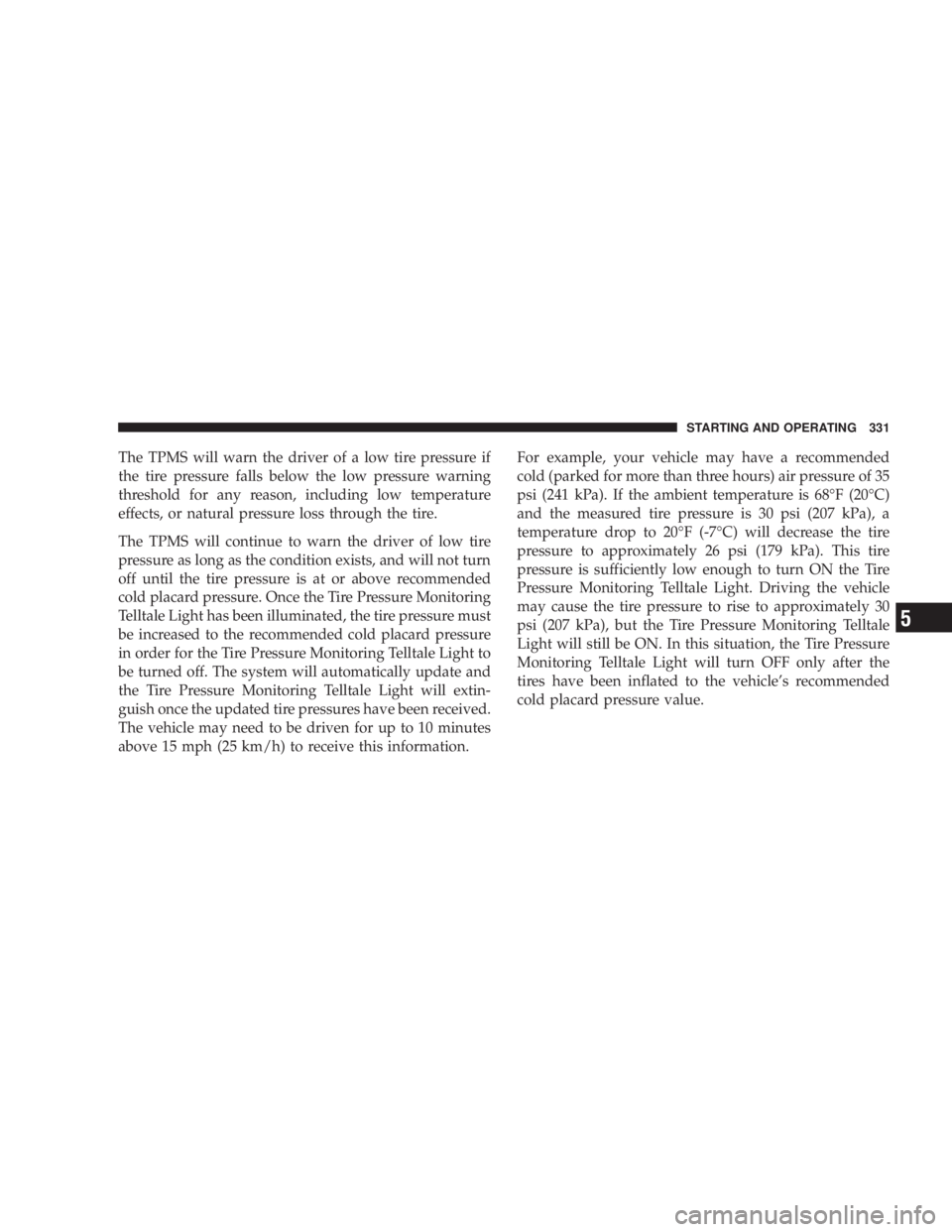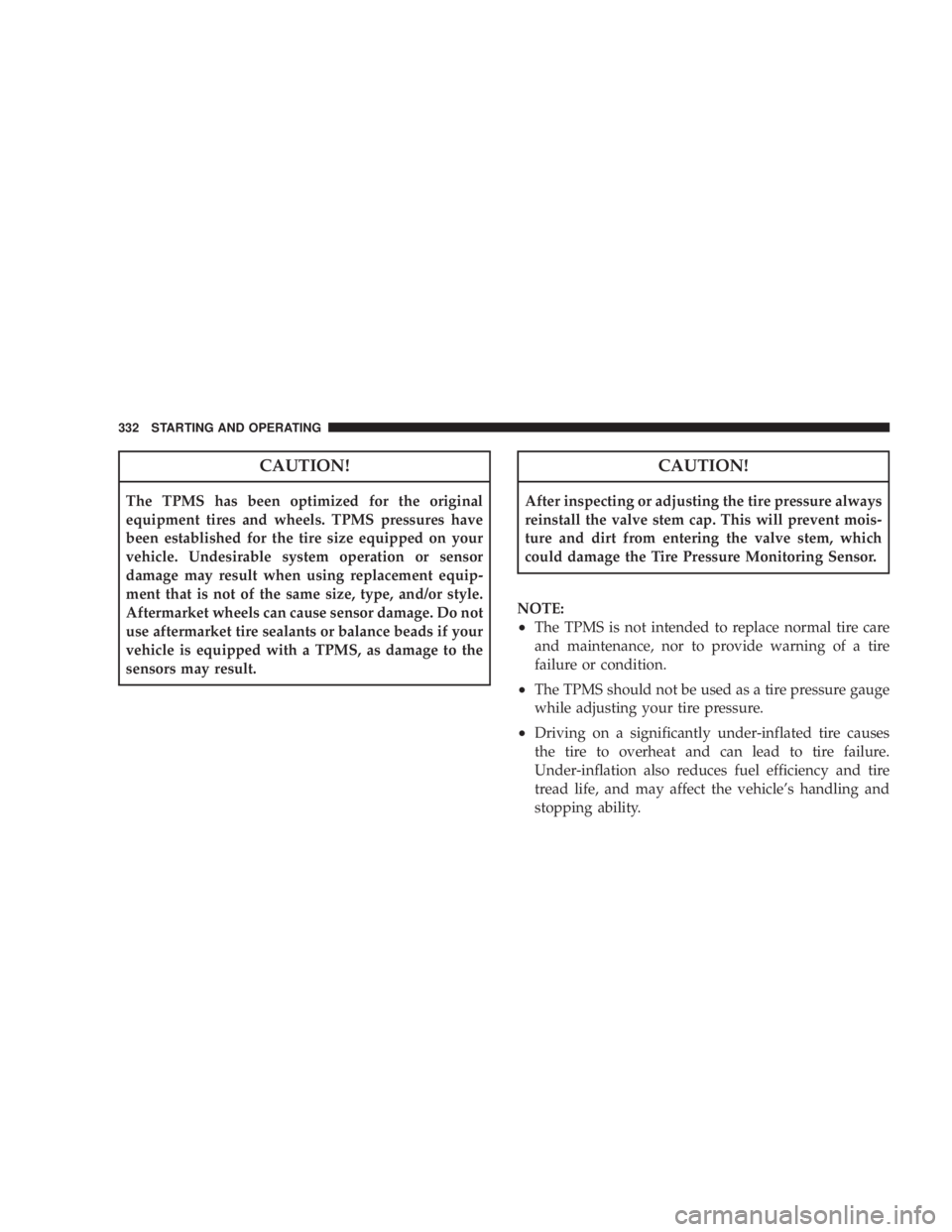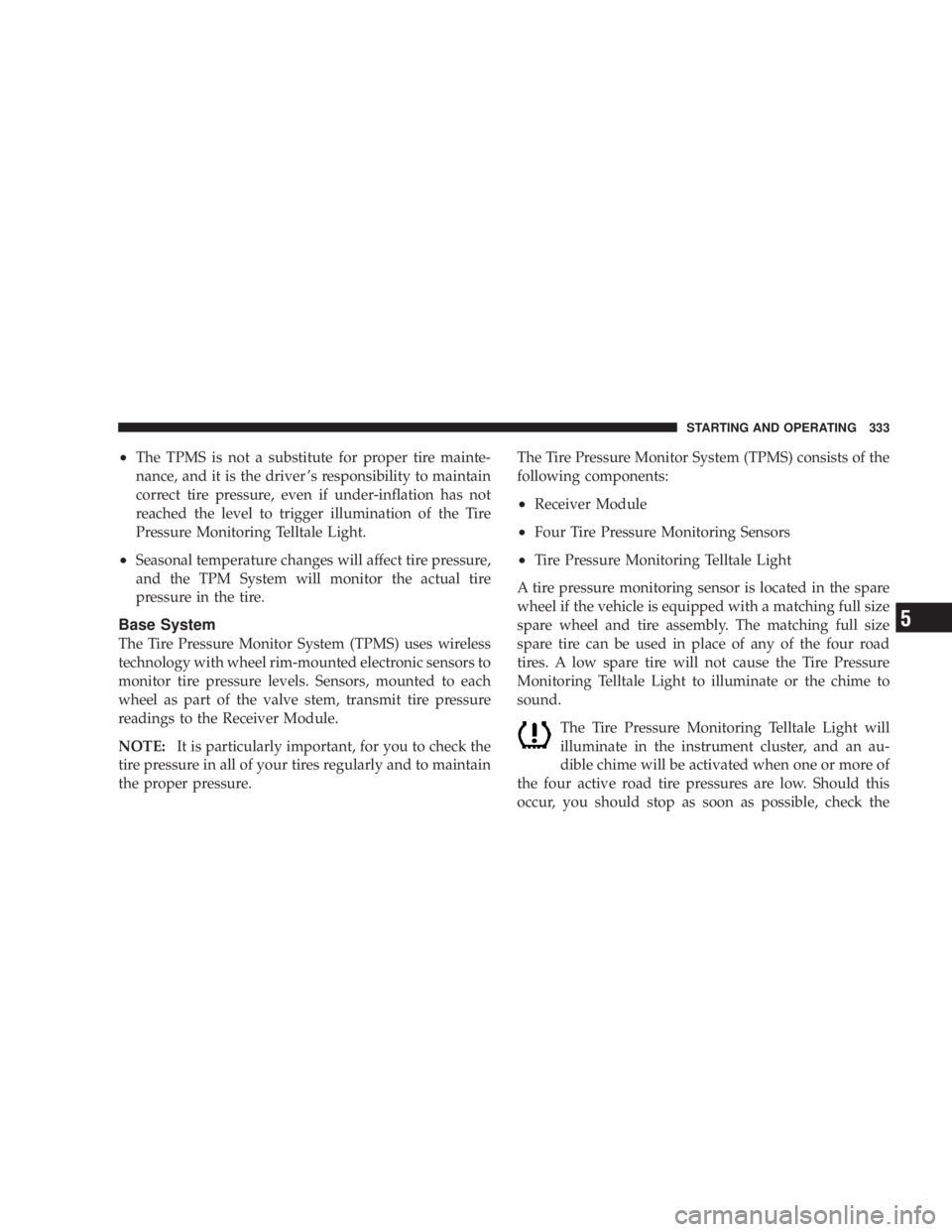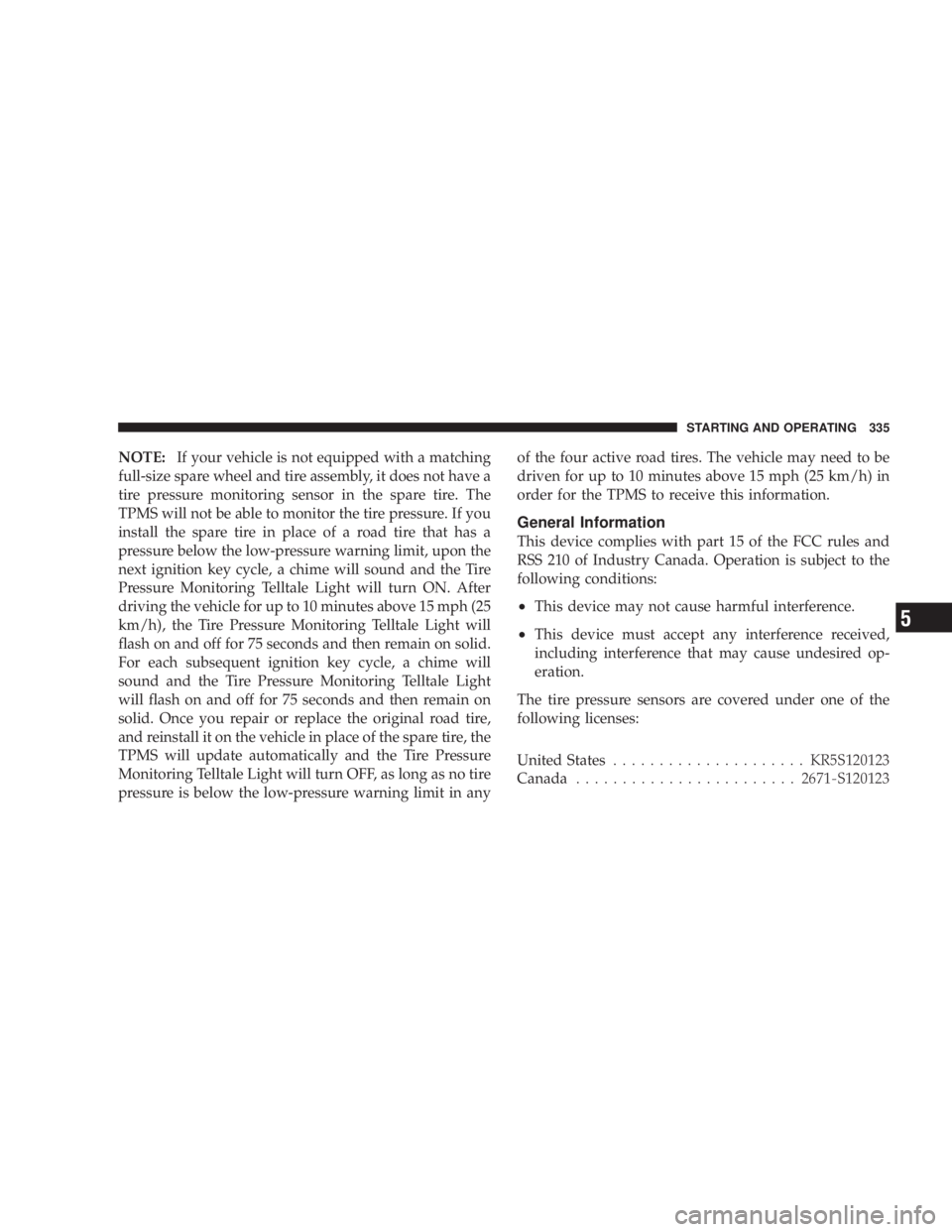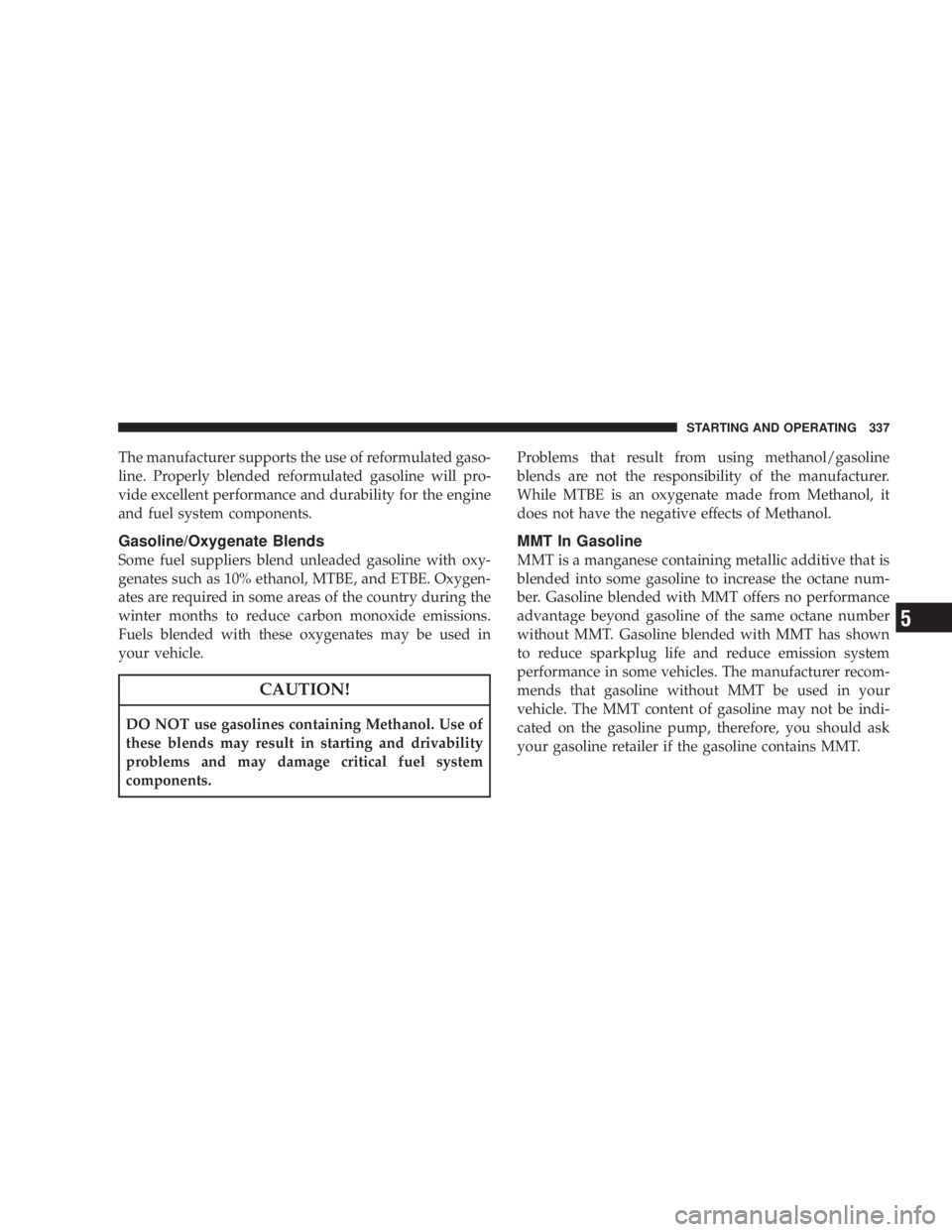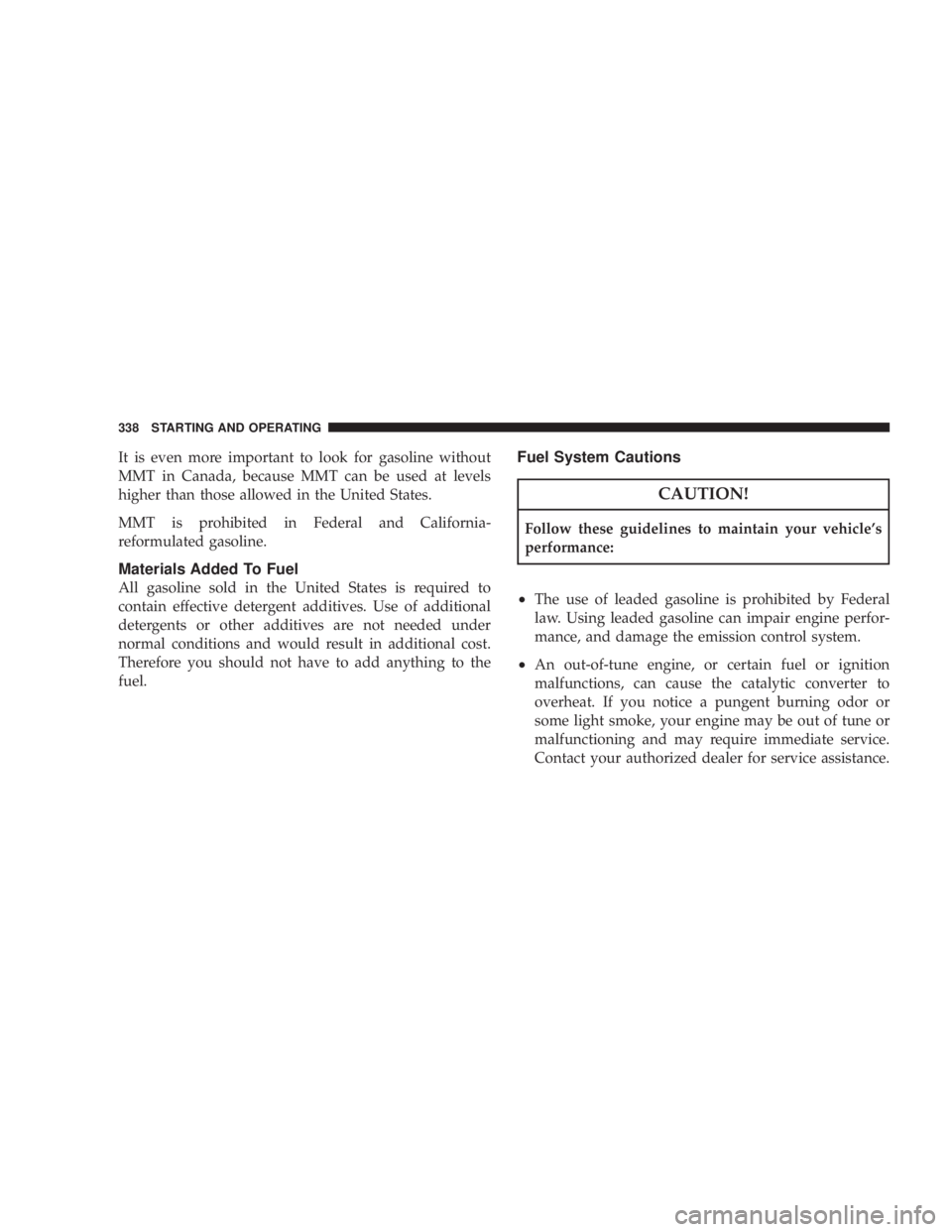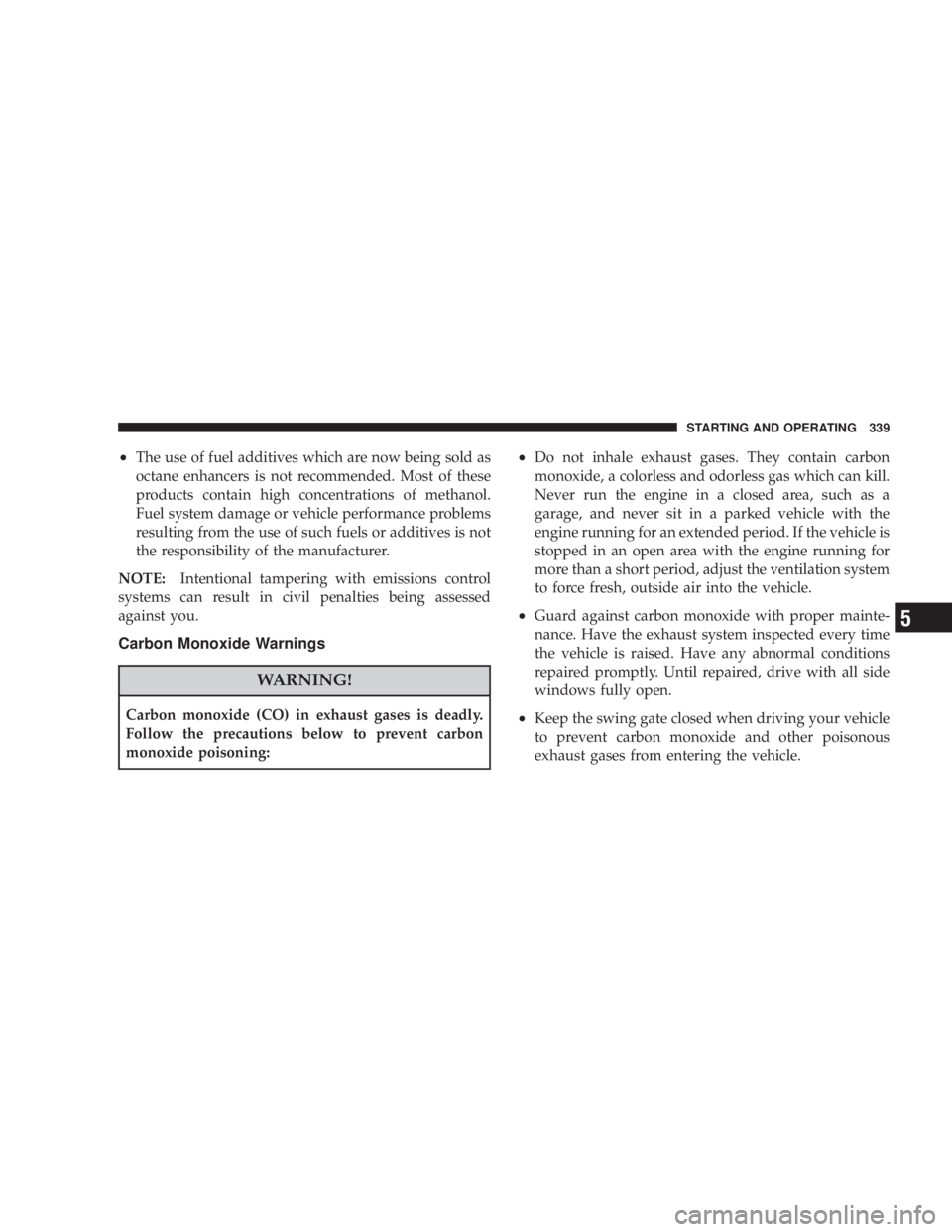JEEP WRANGLER UNLIMITED 2008 Owners Manual
WRANGLER UNLIMITED 2008
JEEP
JEEP
https://www.carmanualsonline.info/img/16/55980/w960_55980-0.png
JEEP WRANGLER UNLIMITED 2008 Owners Manual
Trending: warning lights, clock setting, airbag disable, child lock, tow, ECU, oil dipstick
Page 331 of 466
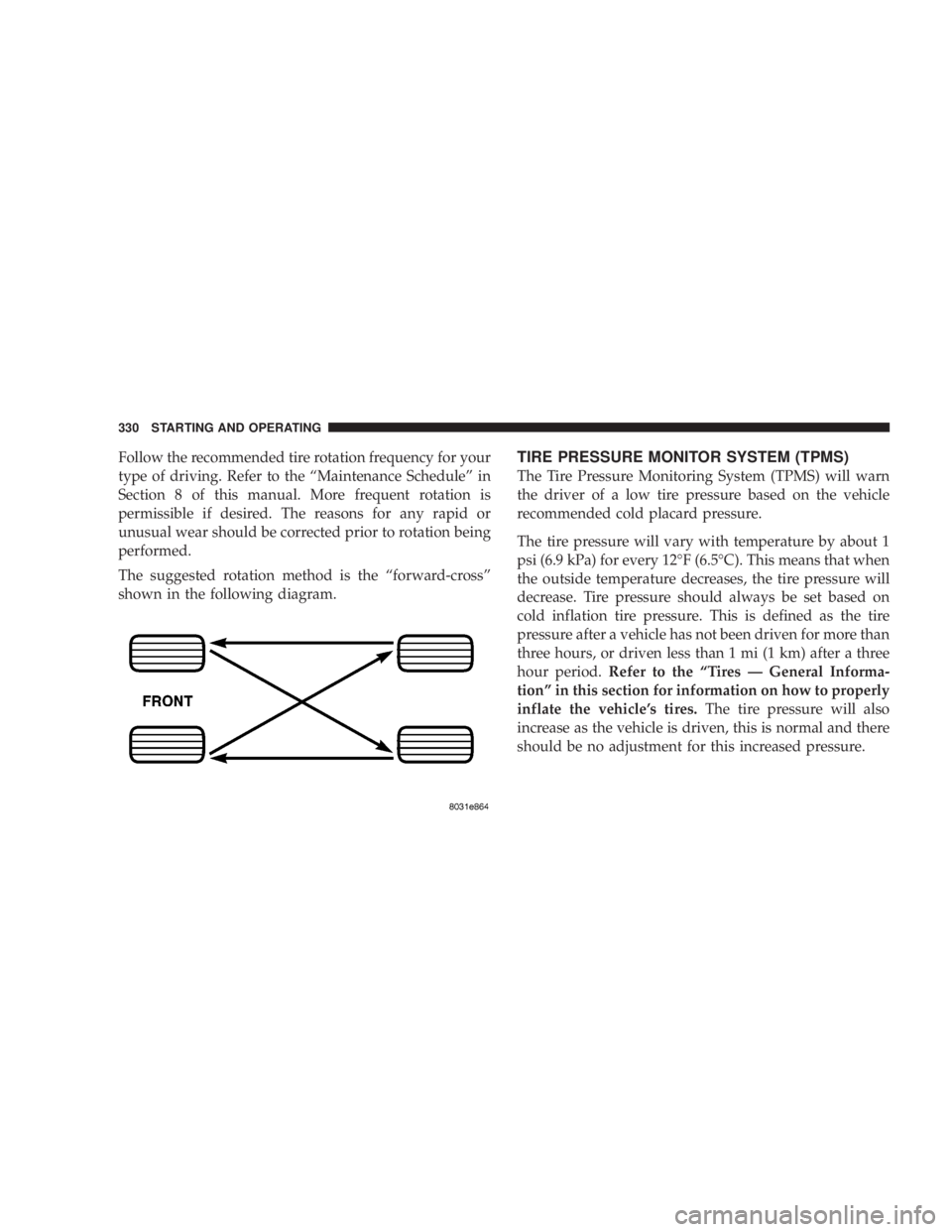
Follow the recommended tire rotation frequency for your
type of driving. Refer to the “Maintenance Schedule” in
Section 8 of this manual. More frequent rotation is
permissible if desired. The reasons for any rapid or
unusual wear should be corrected prior to rotation being
performed.
The suggested rotation method is the “forward-cross”
shown in the following diagram.TIRE PRESSURE MONITOR SYSTEM (TPMS)
The Tire Pressure Monitoring System (TPMS) will warn
the driver of a low tire pressure based on the vehicle
recommended cold placard pressure.
The tire pressure will vary with temperature by about 1
psi (6.9 kPa) for every 12°F (6.5°C). This means that when
the outside temperature decreases, the tire pressure will
decrease. Tire pressure should always be set based on
cold inflation tire pressure. This is defined as the tire
pressure after a vehicle has not been driven for more than
three hours, or driven less than 1 mi (1 km) after a three
hour period.Refer to the “Tires — General Informa-
tion” in this section for information on how to properly
inflate the vehicle’s tires. The tire pressure will also
increase as the vehicle is driven, this is normal and there
should be no adjustment for this increased pressure.
Page 332 of 466
Page 333 of 466
CAUTION!
The TPMS has been optimized for the original
equipment tires and wheels. TPMS pressures have
been established for the tire size equipped on your
vehicle. Undesirable system operation or sensor
damage may result when using replacement equip-
ment that is not of the same size, type, and/or style.
Aftermarket wheels can cause sensor damage. Do not
use aftermarket tire sealants or balance beads if your
vehicle is equipped with a TPMS, as damage to the
sensors may result.
Page 334 of 466
Page 335 of 466
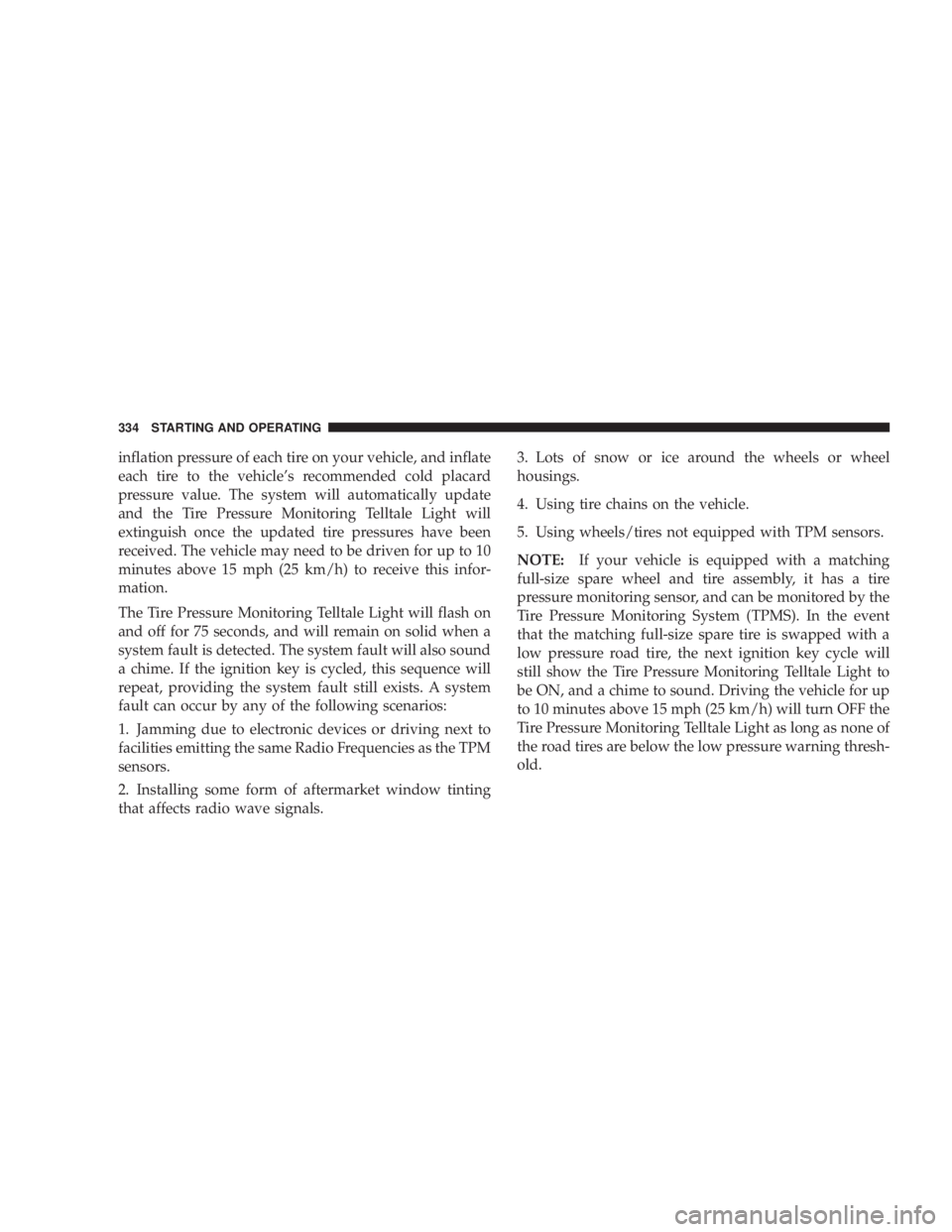
inflation pressure of each tire on your vehicle, and inflate
each tire to the vehicle’s recommended cold placard
pressure value. The system will automatically update
and the Tire Pressure Monitoring Telltale Light will
extinguish once the updated tire pressures have been
received. The vehicle may need to be driven for up to 10
minutes above 15 mph (25 km/h) to receive this infor-
mation.
The Tire Pressure Monitoring Telltale Light will flash on
and off for 75 seconds, and will remain on solid when a
system fault is detected. The system fault will also sound
a chime. If the ignition key is cycled, this sequence will
repeat, providing the system fault still exists. A system
fault can occur by any of the following scenarios:
1. Jamming due to electronic devices or driving next to
facilities emitting the same Radio Frequencies as the TPM
sensors.
2. Installing some form of aftermarket window tinting
that affects radio wave signals.3. Lots of snow or ice around the wheels or wheel
housings.
4. Using tire chains on the vehicle.
5. Using wheels/tires not equipped with TPM sensors.
NOTE:
If your vehicle is equipped with a matching
full-size spare wheel and tire assembly, it has a tire
pressure monitoring sensor, and can be monitored by the
Tire Pressure Monitoring System (TPMS). In the event
that the matching full-size spare tire is swapped with a
low pressure road tire, the next ignition key cycle will
still show the Tire Pressure Monitoring Telltale Light to
be ON, and a chime to sound. Driving the vehicle for up
to 10 minutes above 15 mph (25 km/h) will turn OFF the
Tire Pressure Monitoring Telltale Light as long as none of
the road tires are below the low pressure warning thresh-
old.
334 STARTING AND OPERATING
Page 336 of 466
Page 337 of 466
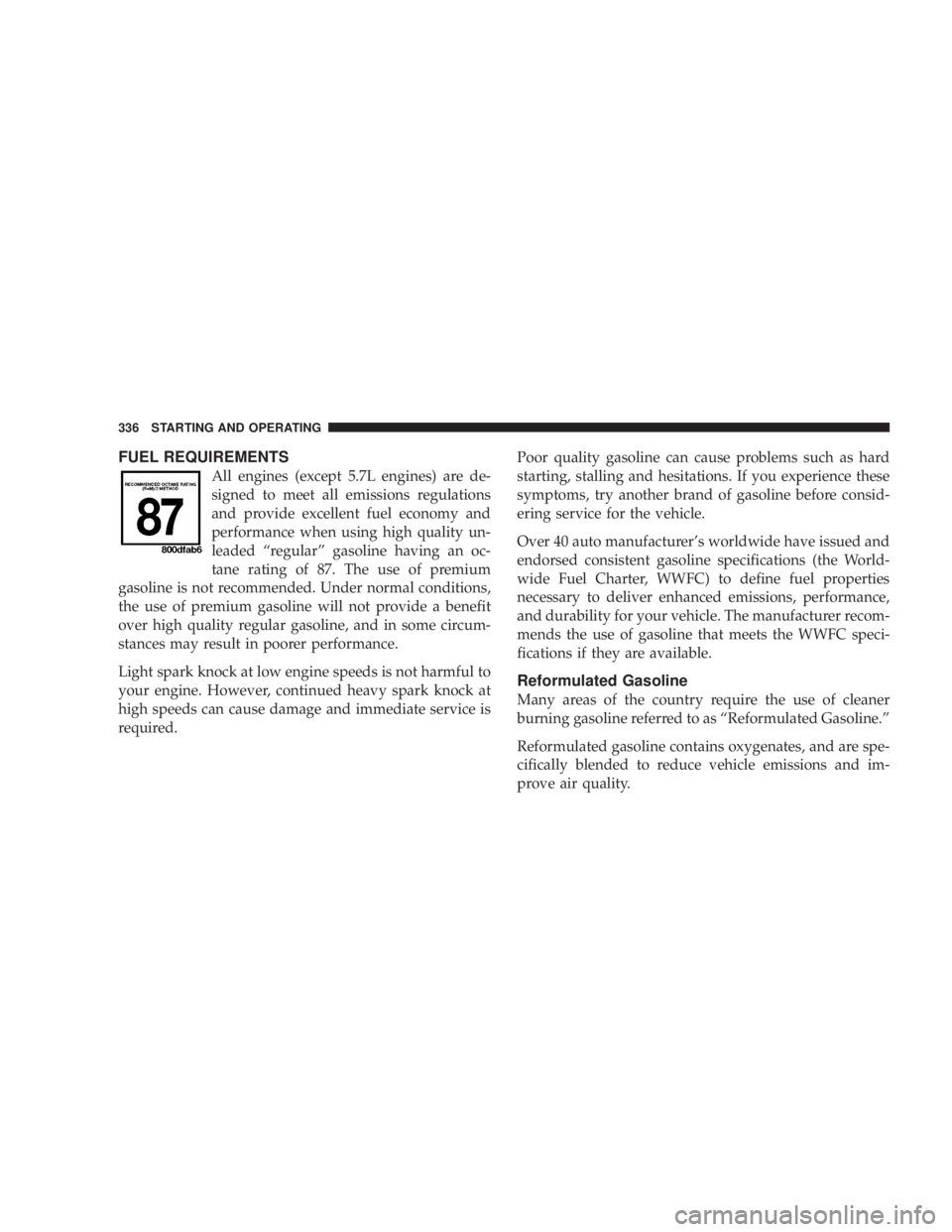
FUEL REQUIREMENTS
All engines (except 5.7L engines) are de-
signed to meet all emissions regulations
and provide excellent fuel economy and
performance when using high quality un-
leaded “regular” gasoline having an oc-
tane rating of 87. The use of premium
gasoline is not recommended. Under normal conditions,
the use of premium gasoline will not provide a benefit
over high quality regular gasoline, and in some circum-
stances may result in poorer performance.
Light spark knock at low engine speeds is not harmful to
your engine. However, continued heavy spark knock at
high speeds can cause damage and immediate service is
required. Poor quality gasoline can cause problems such as hard
starting, stalling and hesitations. If you experience these
symptoms, try another brand of gasoline before consid-
ering service for the vehicle.
Over 40 auto manufacturer’s worldwide have issued and
endorsed consistent gasoline specifications (the World-
wide Fuel Charter, WWFC) to define fuel properties
necessary to deliver enhanced emissions, performance,
and durability for your vehicle. The manufacturer recom-
mends the use of gasoline that meets the WWFC speci-
fications if they are available.
Reformulated Gasoline
Many areas of the country require the use of cleaner
burning gasoline referred to as “Reformulated Gasoline.”
Reformulated gasoline contains oxygenates, and are spe-
cifically blended to reduce vehicle emissions and im-
prove air quality.
Page 338 of 466
Page 339 of 466
It is even more important to look for gasoline without
MMT in Canada, because MMT can be used at levels
higher than those allowed in the United States.
MMT is prohibited in Federal and California-
reformulated gasoline.
Materials Added To Fuel
All gasoline sold in the United States is required to
contain effective detergent additives. Use of additional
detergents or other additives are not needed under
normal conditions and would result in additional cost.
Therefore you should not have to add anything to the
fuel.
Fuel System Cautions
Page 340 of 466
Trending: fuel filter, run flat, seat adjustment, immobilizer, jacking, alarm, wipers

